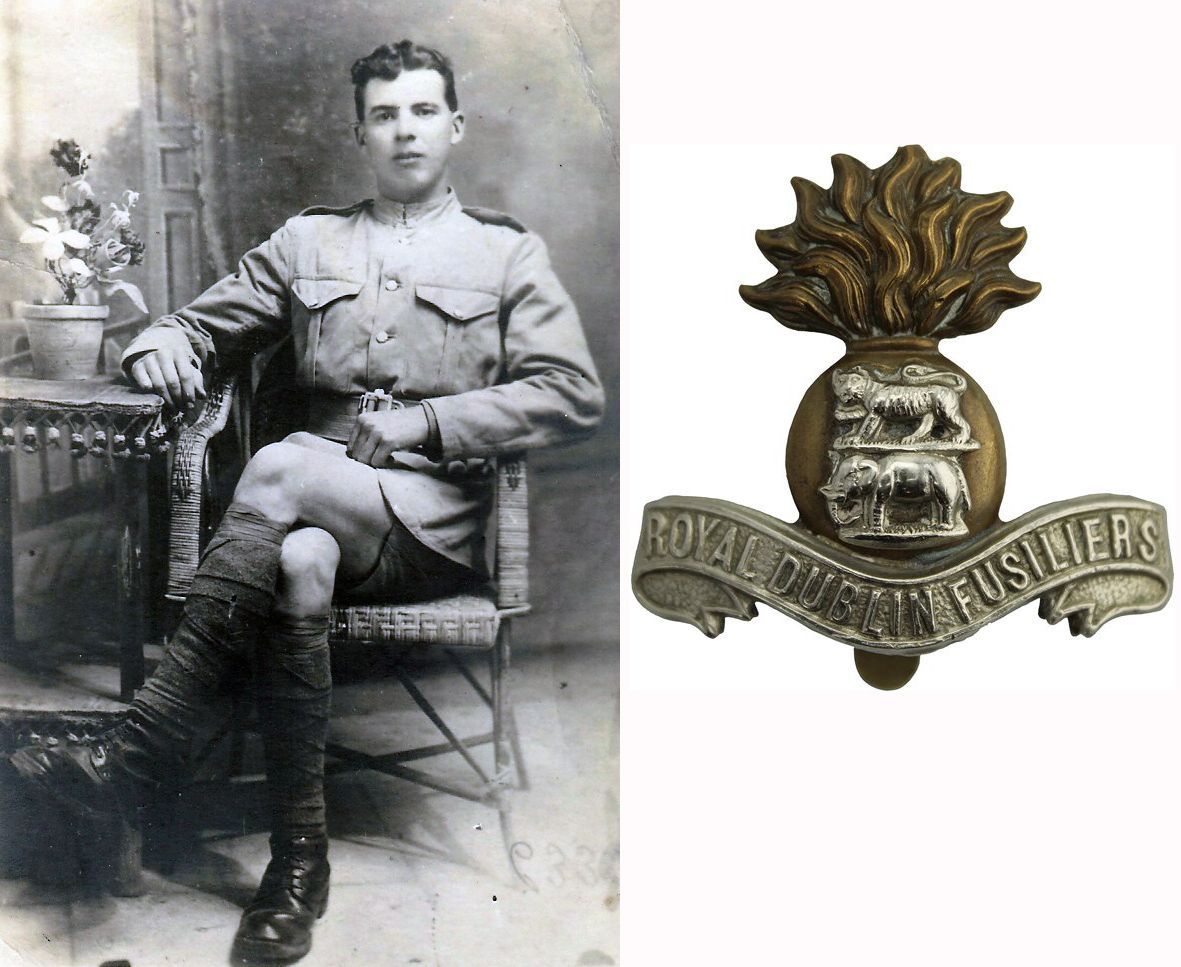In Memory of
GEORGE EDWIN WINTER
Born: 1897 Garford, Nr Marcham, Berkshire.
Middle child of 6 born to George & Mary Ann Winter of Lower Street (Milton Lane), Steventon.
Pre-war occupation: General Labourer
28880/164172 Private George Winter
7th (Service) & 2nd Battalion, Royal Dublin Fusiliers
Died: 31st May 1930 aged 33
Died at home (Haemorrhage in to the Spinal Cord). Possible long term complications of wounds received in action in Northern France (Hindenburg Line).
REMEMBERED WITH HONOUR:
St Michael & All Angels churchyard
Steventon, Berkshire


(No War Graves Commission memorial)
George Winter joined the Royal Dublin Fusiliers, with the 7th battalion based at Basingstoke, in December 1915 at the age of 18. He was deployed to Salonika (Greece) shortly afterwards. Then on to Egypt and Palestine in Sept 1917, as part of the Palestine campaign. In August 1918 7th Battalion embarked from Alexandria to France and was very likely absorbed into the very much depleted Royal Dublin 2nd Battalion. September and October was to be the final push through the Hindenburg Line that would finally see an end to the war. However, private Winter was severely injured in the shoulder in October and this ended his brave war effort. Over the next two years, much time was spent in hospital due to the injuries he suffered. As a result he received the Silver War Badge and was honourably discharged from the Royal Dublin Fusiliers on 28 Mar 1919, due to wounds received in action overseas (UK Silver War Badge Records, 1914 - 1920).
The Silver War Badge was issued in the United Kingdom during World War I, to service personnel who had been honourably discharged due to wounds or sickness. The badge, sometimes known as the Discharge Badge, Wound Badge or Services Rendered Badge, was first issued in September 1916, along with an official certificate of entitlement. The sterling silver lapel badge was intended to be worn on civilian clothes. It had been the practice of some women to present white feathers to apparently able-bodied young men who were not wearing the King's uniform. The badge was to be worn on the right breast while in civilian dress, it was forbidden to wear on a military uniform.
After his discharge, George returned to his parent's home at the Green, Steventon. George struggled to overcome his injuries and eventually died of a haemorrhage in his spinal cord in 1930, aged 33. George’s parent's campaigned for his name to be added to the war memorial due to his services during the war, injuries and early death. This was eventually granted some years later, resulting in George becoming the 33rd casualty of WW1 to be honoured on the Steventon memorial.
George Edwin Winter was born at Garford, Nr Marcham in 1897. He became the middle child of 6 - 4 sisters (Nellie Beatrice, Ethel May, Gladys & Minnie) and 1 brother Charles R (known as Chuck), born to George and Mary Ann Winter. George's parents lived and worked at the Noah's Ark Public House at Garford from about 1892 until moving to Steventon in 1904. Other members of the Winter family lived in Drayton. George started work with the family builders in Drayton before the war, at that time George lived with his parents in Milton Lane. George was keen to join the Army and signed up as soon as he was 18. After returning from his war service badly injured and spending a great deal of time in and out of hospital, George took on work as a labourer for the Steventon Parish Trustees.
Up until his death in 1930, he continued living with his parents at what I believe to be No. 26 Milton Lane (now No. 28). George is buried at Steventon churchyard, alongside his father, who died in 1933.
To this day George’s Nephew, Jack Jarvis snr, whose Mother Gladys Winter was George’s younger sister, still lives in Steventon (as of Jan 2023).
For additional information regarding this soldier and his family. Please click here